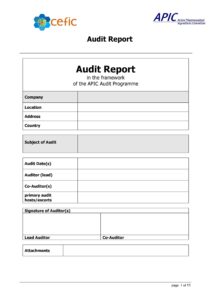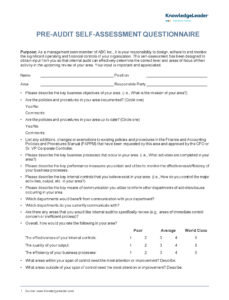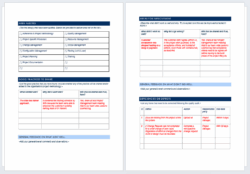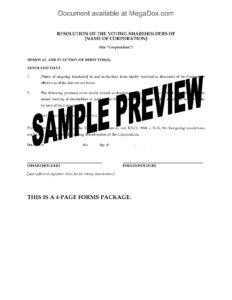Conducting internal audits is a critical function for any organization striving for continuous improvement and strong governance. However, the audit process doesn’t truly end when the report is issued. To genuinely foster a culture of learning and refinement, it’s essential to understand the experience of those who were audited. This is where the power of collecting feedback comes into play, transforming a transactional process into a collaborative one.
Gathering post-audit feedback is more than just a formality; it’s a strategic move. It provides valuable insights into the audit’s effectiveness, the clarity of communication, and the overall perception of the internal audit function. By actively seeking input, you not only identify areas for your own team’s development but also strengthen relationships with departments across the organization, making future audits smoother and more impactful.
Why Your Internal Audit Needs a Feedback Loop
Implementing a robust feedback mechanism for your internal audit activities is a non-negotiable step for any forward-thinking audit department. It moves your function beyond merely identifying deficiencies and towards becoming a true partner in organizational success. Without a structured way to gather input, you might be missing critical opportunities to enhance your methodologies, improve communication, and better serve your stakeholders. This direct line of communication helps dismantle the perception of audits as punitive and instead establishes them as constructive engagements aimed at collective improvement.
Think about it: an audit is a significant event for the auditee. They invest time, resources, and effort into the process. Soliciting their perspective post-audit demonstrates respect for their involvement and values their experience. This simple act can significantly boost engagement and cooperation in subsequent audit cycles. Moreover, feedback often uncovers blind spots that even the most seasoned auditors might overlook, leading to more comprehensive and effective future audits. It’s about ensuring that the audit process itself is under continuous scrutiny and improvement, just like the processes it reviews.
Tangible Benefits for the Audit Team
The insights gleaned from auditee feedback are not just feel-good sentiments; they are actionable data points that can lead to significant operational improvements within the internal audit department. This data allows audit leaders to pinpoint specific training needs for their team, refine audit methodologies, and optimize resource allocation. It also provides quantifiable evidence of the audit function’s value to the organization, which can be invaluable when advocating for resources or demonstrating effectiveness to senior management and the audit committee.
Here are some specific benefits you can expect:
- Improved Audit Quality: Feedback helps refine audit scope, procedures, and the relevance of findings.
- Enhanced Auditor Skills: Identifies areas where auditors need more training in communication, technical knowledge, or engagement.
- Stronger Stakeholder Relationships: Builds trust and fosters a more collaborative environment with audited departments.
- Streamlined Processes: Highlights inefficiencies in the audit process itself, from planning to reporting.
- Demonstrated Value: Provides evidence of the audit function’s commitment to continuous improvement and responsiveness.
Ultimately, a well-implemented feedback loop transforms the internal audit function into a more agile, responsive, and respected part of the organization. It’s about making sure your audits aren’t just done, but done well, and perceived as truly valuable by everyone involved.
Crafting Your Ideal Internal Audit Feedback Survey Template Sample
Developing an effective internal audit feedback survey template sample requires careful thought and strategic design. It’s not just about throwing a few questions together; it’s about crafting queries that elicit meaningful, actionable responses. Your survey should be concise, easy to understand, and respectful of the auditee’s time. The goal is to gather specific insights into various aspects of the audit experience, from initial communication to the final report and follow-up. This thoughtful approach ensures you get the most out of every response.
When designing your internal audit feedback survey template sample, consider the full lifecycle of the audit. Questions should cover the planning phase, the fieldwork, the reporting, and the overall interaction with the audit team. It’s often helpful to use a mix of rating scales (e.g., Likert scales) for quantitative data and open-ended questions for qualitative insights. The open-ended questions are particularly valuable as they allow auditees to elaborate on their experiences and suggest improvements in their own words, providing rich, nuanced data.
Ensuring anonymity is paramount for encouraging honest and candid feedback. If auditees feel their responses could be traced back to them, they might be hesitant to share critical observations. Clearly state the confidentiality of responses upfront. Additionally, consider the timing of the survey. Sending it out shortly after the audit fieldwork concludes, but before too much time has passed, is ideal. This ensures the experience is still fresh in the auditee’s mind, leading to more accurate and detailed recall.
Here are some essential categories and sample questions to include in your survey:
- Audit Planning & Communication:
- Was the purpose and scope of the audit clearly communicated?
- Did you find the initial requests for information clear and reasonable?
- How well did the audit team communicate throughout the audit process?
- Audit Execution & Professionalism:
- Was the audit conducted with minimal disruption to your daily operations?
- Did the audit team demonstrate professionalism and respect?
- Were the auditors knowledgeable about your area and its operations?
- Findings & Reporting:
- Were the audit findings clearly articulated and supported by evidence?
- Did you have adequate opportunity to discuss and clarify findings?
- Was the final audit report clear, concise, and useful?
- Overall Experience & Impact:
- How would you rate your overall experience with this audit?
- Do you believe the audit will help your department improve?
- What suggestions do you have for improving our internal audit process?
Implementing a feedback survey is an investment in the continuous improvement of your internal audit function. It provides invaluable data that can refine processes, enhance professional development, and ultimately strengthen the perceived value of internal audit within your organization. By actively listening to your stakeholders, you transform a compliance activity into a true partnership for organizational excellence, ensuring your audits are not just performed, but truly impactful.



